Rainwater harvesting For Apartments In Bangalore
Discover rainwater harvesting for apartments, homes, agriculture, and industry In Bangalore by Blue Bright solutions(BBS), its uses, setup, advantages, and maintenance guidelines. Future-proof your water supply. Contact us now.
Rainwater harvesting For Apartment Consultants Bangalore
Rainwater harvesting in Bengaluru’s apartments is not just a sustainable practice; it’s a legal requirement. Under the Bangalore Water Supply and Sewerage (Amendment) Act, 2009, and subsequent amendments, it is mandatory for buildings with a sital area of 1200 sq ft or more (for new constructions) and 2400 sq ft or more (for older buildings) to install a rainwater harvesting system. Failure to comply can result in fines and disconnection of water supply by the BWSSB. The city’s water board has specific guidelines, mandating a minimum storage or recharge capacity of 20 litres per square meter of roof area and 10 litres per square meter of paved open space. This collective effort across apartment complexes helps reduce the city’s dependence on the overstressed Cauvery water supply and a rapidly depleting groundwater table.
Implementing rainwater harvesting in an apartment complex typically involves a centralized system that collects water from the rooftop. The collected rainwater is first passed through a “first-flush” diverter to remove initial pollutants like dust and debris. It then goes through a filtration system, often a sand bed or disc filter, to remove finer impurities. The filtered water is stored in large underground sumps or overhead tanks and can be used for non-potable purposes such as flushing toilets, gardening, and washing common areas. Excess water that cannot be stored is directed to groundwater recharge pits or borewells to replenish the local aquifer, a critical step in a city that heavily relies on groundwater. By adopting RWH, apartment complexes can significantly cut their water bills and achieve greater water security, especially during the dry summer months. We offer rain water harvesting consultancy and services across Bangalore
The What and Why of Rainwater Harvesting (RWH)
Rainwater harvesting (RWH) is the process of collecting and storing rainwater from rooftops or other man-made surfaces. Instead of letting this valuable resource flow into stormwater drains and out to sea, it’s captured and saved for later use. This ancient practice is a crucial, modern solution for water conservation and a key component of building a more sustainable and resilient future.
Why is RWH important today?
- Combating Water Scarcity: As global populations grow and climate patterns shift, many regions face water shortages. RWH provides a decentralized, independent water source, reducing the strain on municipal supplies.
- Economic Benefits: By supplementing your water usage with harvested rain, you can significantly lower your water bills.
- Environmental Stewardship: RWH reduces the volume of stormwater runoff, which helps prevent soil erosion, mitigates urban flooding, and can even replenish groundwater aquifers
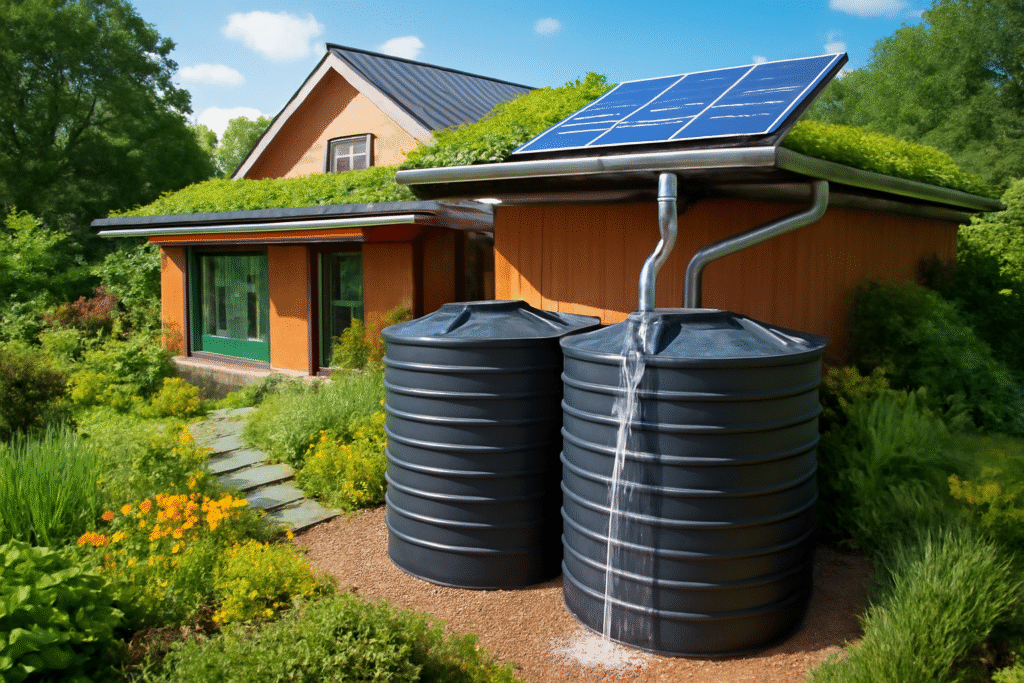
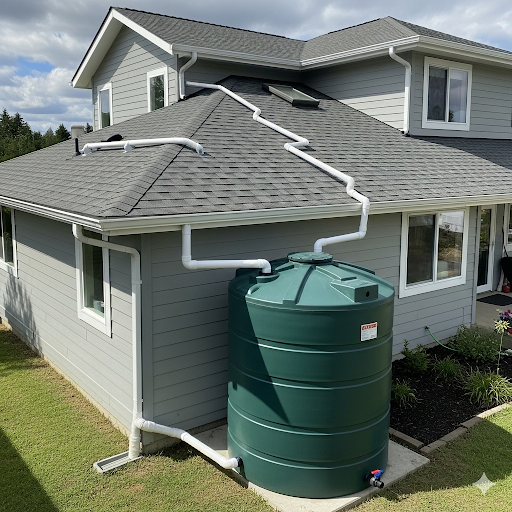
Methods of Rainwater Harvesting
Rooftop Rainwater Harvesting
This is a common method for urban and rural areas where the roof of a house or building acts as the catchment area. The process typically involves a few key steps:
- Collection: Rain that falls on the rooftop is channeled through gutters and downspouts.
- Filtration: The water is passed through a filter to remove debris like leaves, dirt, and dust. A “first flush” diverter can be used to discard the initial, most polluted runoff.
- Storage or Recharge: The filtered water can either be stored in a tank for direct use (e.g., for non-potable purposes like watering plants, cleaning, or flushing toilets) or diverted to a recharge system to replenish groundwater.
Surface Runoff Harvesting
This method involves collecting rainwater that flows over the ground, often from open spaces like parks, playgrounds, and unpaved areas. This water is collected and stored or directed for groundwater recharge. Key structures used for this method include:
- Percolation Tanks: Large, artificially created surface water bodies that collect runoff. The water then slowly seeps into the ground, recharging the aquifer.
- Recharge Trenches: Excavated trenches filled with porous materials like gravel, boulders, and sand. The runoff is diverted into these trenches, where the water percolates into the ground.
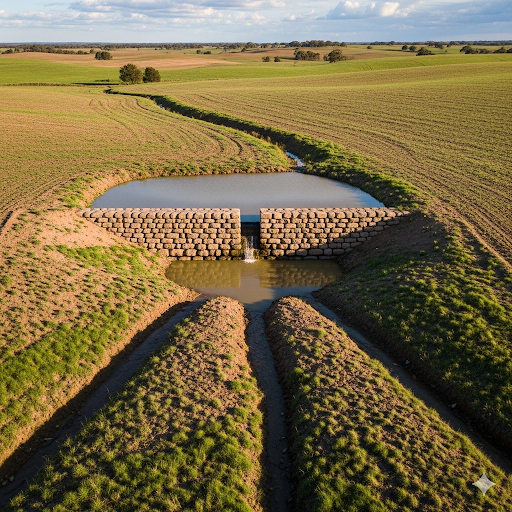
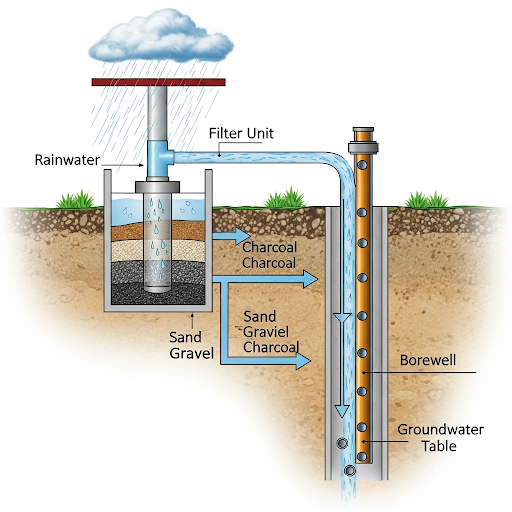
Borewell Recharge RWH
This method focuses on directing filtered rainwater directly into a dry or low-yielding borewell to replenish the underground aquifer. There are two primary methods:
- Direct Recharge: A pit is dug around the borewell’s casing pipe. The pipe is perforated, and the pit is filled with filter media (gravel, sand, etc.). Filtered rainwater is channeled into this pit and directly seeps into the borewell, recharging the aquifer. This is most suitable for borewells that are completely dry.
- Indirect Recharge: A separate recharge well is constructed a short distance away from the borewell. Filtered rainwater is directed into this recharge well, where it percolates through the soil and then flows naturally towards the borewell, recharging the surrounding aquifer. This is recommended for borewells that are still functioning but have a low water yield.
Groundwater Recharge Pit
A groundwater recharge pit, also known as a percolation pit, is a structure designed to facilitate the infiltration of surface water into the ground, thereby recharging shallow aquifers. It’s a simple, effective method that’s suitable for small houses or campuses.
- Construction: A pit is excavated and lined with a brick or stone masonry wall. The pit is filled with filter materials in layers, typically starting with larger boulders at the bottom and progressing to gravel and coarse sand on top.
- Function: Runoff water is directed into the pit. As the water passes through the layers of filter media, impurities are removed. The clean water then percolates down into the soil, replenishing the local groundwater table. The pit’s capacity depends on the catchment area, rainfall intensity, and the soil’s recharge rate.
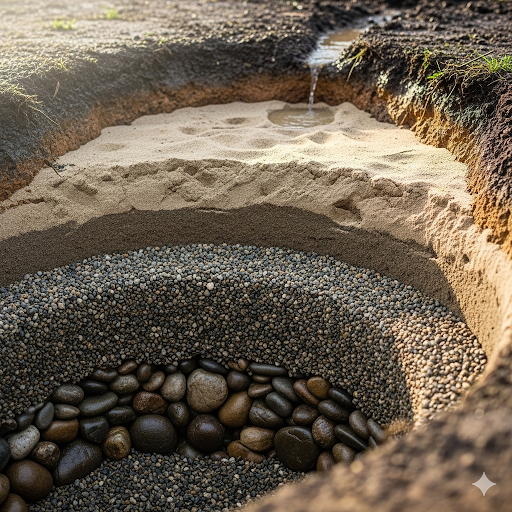
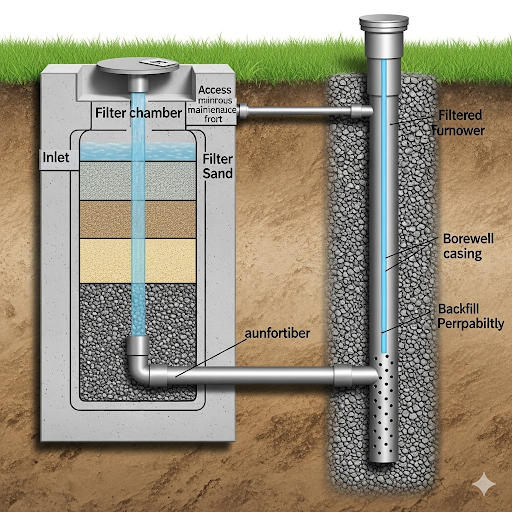
Applications and Benefits of Harvested Rainwater
Harvested rainwater is versatile and offers numerous advantages.
Common Applications
- Non-Potable Household Use: Rainwater is perfect for tasks that don’t require drinking-quality water, such as flushing toilets, washing clothes, and cleaning floors.
- Gardening & Landscaping: Rainwater is naturally soft, free of chlorine and other chemicals, which makes it excellent for watering plants and gardens.
- Commercial and Industrial Use: Businesses can use RWH for cooling systems, process water, or for washing equipment, significantly cutting their operational costs.
- Groundwater Recharge: Excess harvested water can be directed into recharge pits or wells, which helps replenish local groundwater levels and combat water table depletion.
Key Benefits
- Reduced Water Bills: Using rainwater for non-potable purposes can drastically cut down on your reliance on the municipal water supply.
- Environmental Protection: It helps reduce the strain on public water infrastructure, conserves freshwater resources, and mitigates urban flooding by reducing stormwater runoff.
- Improved Water Quality: In many areas, rainwater is softer than municipal water, reducing the need for softeners and prolonging the life of appliances like washing machines.
- Increased Water Security: Having an independent water source provides resilience against water shortages and utility outages.
Components of a Rainwater Harvesting System
A complete RWH system is made up of several key parts that work together to ensure clean, usable water.
1. Catchment Area This is the surface where the rain lands. For most residential and commercial systems, the rooftop is the primary catchment area. The roof’s material and cleanliness are major factors in the quality of the water collected.
2. Conveyance System This system channels water from the catchment area to the storage tank. It consists of gutters along the roof’s edge and downspouts that guide the water downwards.
3. First-Flush Diverter This simple but critical device ensures the first few gallons of rainfall, which contain dust, leaves, and debris from the roof, are diverted away from the main storage tank. This helps maintain the quality of the stored water.
4. Filtration Before the water enters the storage tank, it passes through a filter to remove any remaining solid particles. A basic mesh filter is often used at the tank’s inlet, while more advanced systems may use a sand or gravel filter for finer purification.
5. Storage Tank (Cistern) The heart of the system, this tank holds the collected water. Storage tanks come in various materials (plastic, concrete, metal) and can be installed either above-ground or underground. Above-ground tanks are easier to install, while underground tanks are more discreet and keep the water cooler. The size of the tank depends on the rainfall in your area and your expected water usage.
6. Distribution System This component moves the stored water to where it will be used. A pump is often needed to pressurize the water, making it available for indoor plumbing or irrigation systems. It’s best to use a separate network of pipes to avoid cross-contamination with the public water supply.
FAQs about Rainwater Harvesting
Is rainwater drinkable?
Generally, no. While rainwater is clean when it falls from the sky, it can pick up contaminants from the roof, gutters, and storage tank. For drinking or cooking, it must be filtered and disinfected using methods like UV sterilization or boiling.
How much water can I collect?
The amount depends on your roof size and the rainfall in your area. A simple calculation: Gallons Collected = Roof Area (in sq ft) x Rainfall (in inches) x 0.623.
What about mosquitoes?
A well-designed system will have a tightly sealed tank with an inlet screen to prevent mosquitoes from entering and breeding.
Is RWH legal everywhere?
Most places encourage RWH, but some areas have regulations or codes. It’s always best to check with your local municipality for any specific rules.
